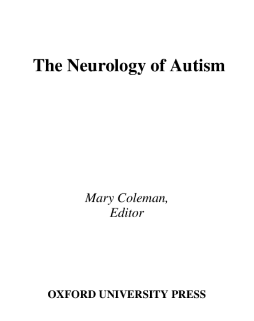
Additional Information
Book Details
Abstract
In Neurology of Autism, Mary Coleman, Catalina Betancur, G. Robert DeLong, Christopher Gillberg, Yoshiko Nomura, Lorenzo Pavone, Martin Ruggieri, and Michele Zappella use the tools of neurological analysis to address a number of the major questions that have arisen in the study of autism. The answers they present have important implications for the direction of future autism research, diagnosis, and treatment. What are the neurological signs and symptoms of autism? The latest information is presented here in an in-depth discussion of epilepsy, cranial circumference, changes in muscle tone, stereotypies, and mutism found in children with autism. In addition, a template is provided for practitioners to follow when conducting neurological examinations of a child with autism. What are the best options for the treatment of autism? The current medical, educational, and alternative therapies are thoroughly reviewed and evaluated. Is autism reversible? The question is explored for syndromic autism, where diseases may have a transient autistic phase, and reviewed in detail for nonsyndromic autism. Is autism primarily a single disease, as originally described by Leo Kanner? Research presented here suggests that autism is, instead, a syndrome involving many disease entities. Has the incidence of autism been increasing in recent years? A sophisticated, historical review of autisms prevalence rates suggests that it has never been rare. What is the relationship between autism and Asperger syndrome? The latest evidence presented here sheds light on the degree to which both syndromes share more than clinical characteristics; they also have some similar findings in imaging, neuropathological, and genetic studies. Which components of the brains neural networks need to be impaired to cause the appearance of autistic symptoms? Although there are many candidate regions, dysfunction of the cerebellum and its circuits is noted to be of great interest. Student and professional researchers, practitioners, and parents will find this book to be a valuable resource for both the latest information from basic-science research and its application to the diagnosis and treatment of autism.
